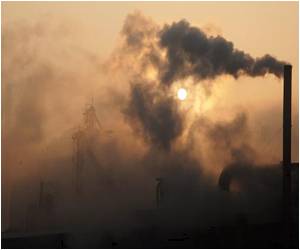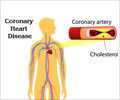In outdoor air, long term exposure to particulate matter is strongly linked to heart attacks and angina, and this association persists at levels of exposure below the current European limits.

The results support lowering of the EU limits for particulate matter air pollution.
Ambient particulate matter air pollution is estimated to cause 3.2 million deaths worldwide per year, but the association between long term exposure to air pollution and incidence of coronary events remains controversial.
In the European Union the current annual limit for particulate matter with a diameter of 2.5 micrometres (μm) or less (known as PM2.5) is 25 µg/m3, which is far above that implemented in the United States (12 µg/m3). And a 2013 BMJ study found average PM2.5 concentrations over a five year period in Beijing was more than 10 times the World Health Organization air quality guideline value of 10 µg/m3.
So an international team of researchers, coordinated by the University of Utrecht, the Netherlands, set out to study the effect of long term exposure to airborne pollutants on acute coronary events (heart attack and unstable angina) in 11 cohorts participating in the European Study of Cohorts for Air Pollution Effects (ESCAPE).
The study involved over 100,000 people with no history of heart disease enrolled from 1997 to 2007 and followed for an average of 11.5 years.
Advertisement
After taking account of several other risk factors, including other illness, smoking, and socioeconomic factors, the researchers found that a 5 μg/m3 increase in PM2.5particulate matter was associated with a 13% increased risk of coronary events and a 10μg/m3 increase in PM10 particulate matter was associated with a 12% increased risk of coronary events.
Advertisement
Further analyses did not alter the results significantly.
"Our study suggests an association between long term exposure to particulate matter and incidence of coronary events," say the authors.
They point out that these associations remained for exposure concentrations below the current European limits, and suggest that the burden of disease attributable to outdoor particulate matter "might be underestimated if only estimates of mortality are considered."
The results of this study, together with other ESCAPE findings, "support lowering of European limits for particulate air pollution to adequately protect public health," they conclude.
This study "has specific relevance to the management of air quality in Europe," say Professors Michael Brauer and John Mancini from the University of British Columbia, in an accompanying editorial.
They also refer to the 2013 BMJ Beijing study and say: "The important impact of air pollution on cardiovascular disease highlighted by these two papers supports efforts to meet existing and even more stringent air quality standards to minimise cardiovascular morbidity and mortality."
Source-Eurekalert















